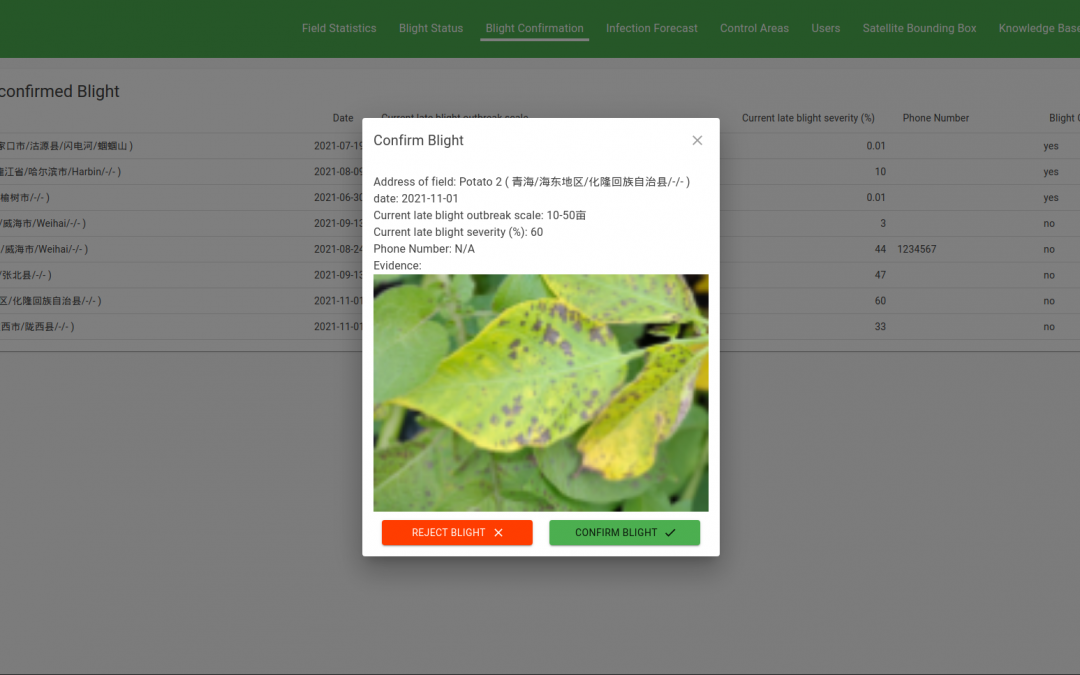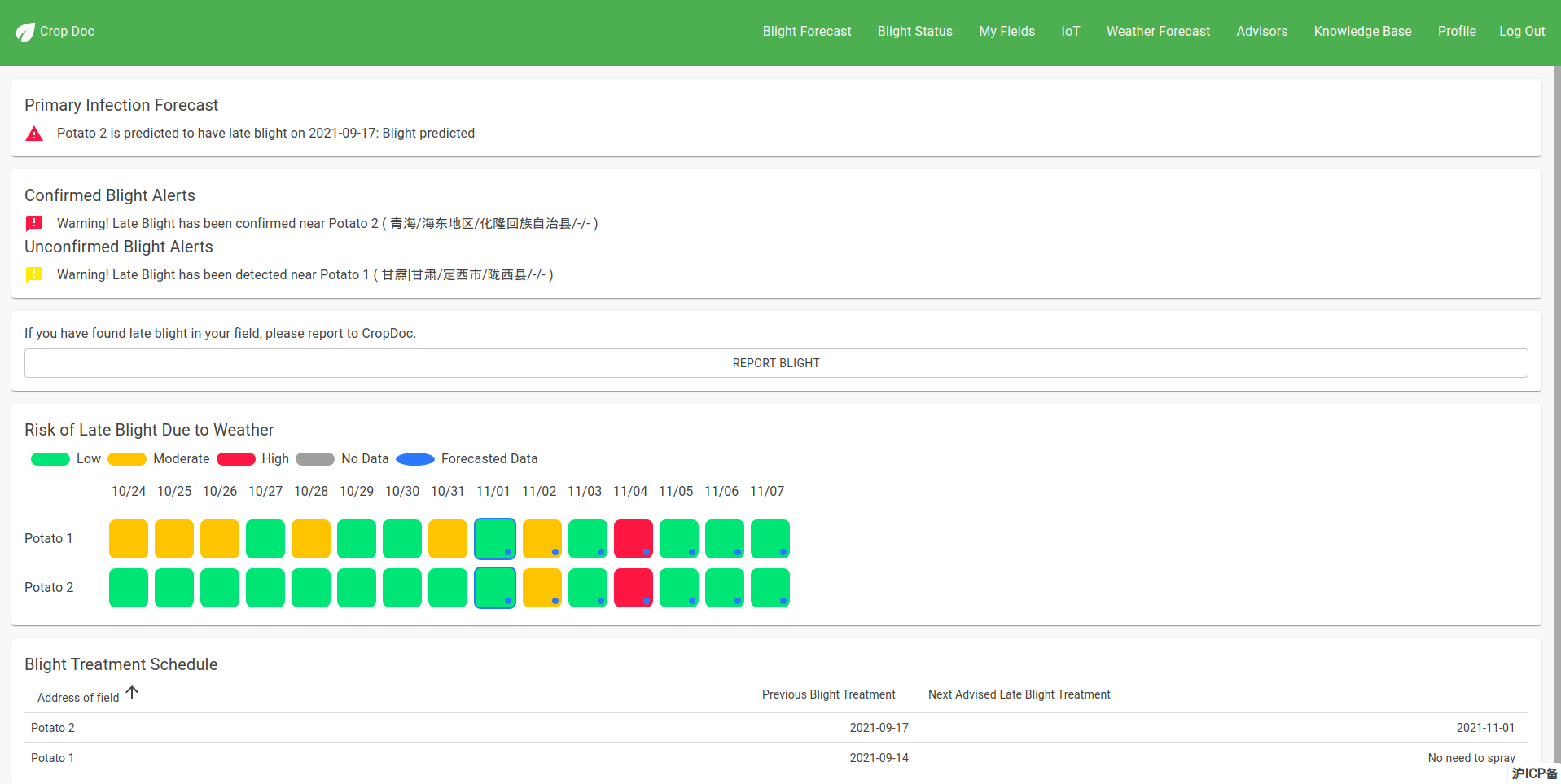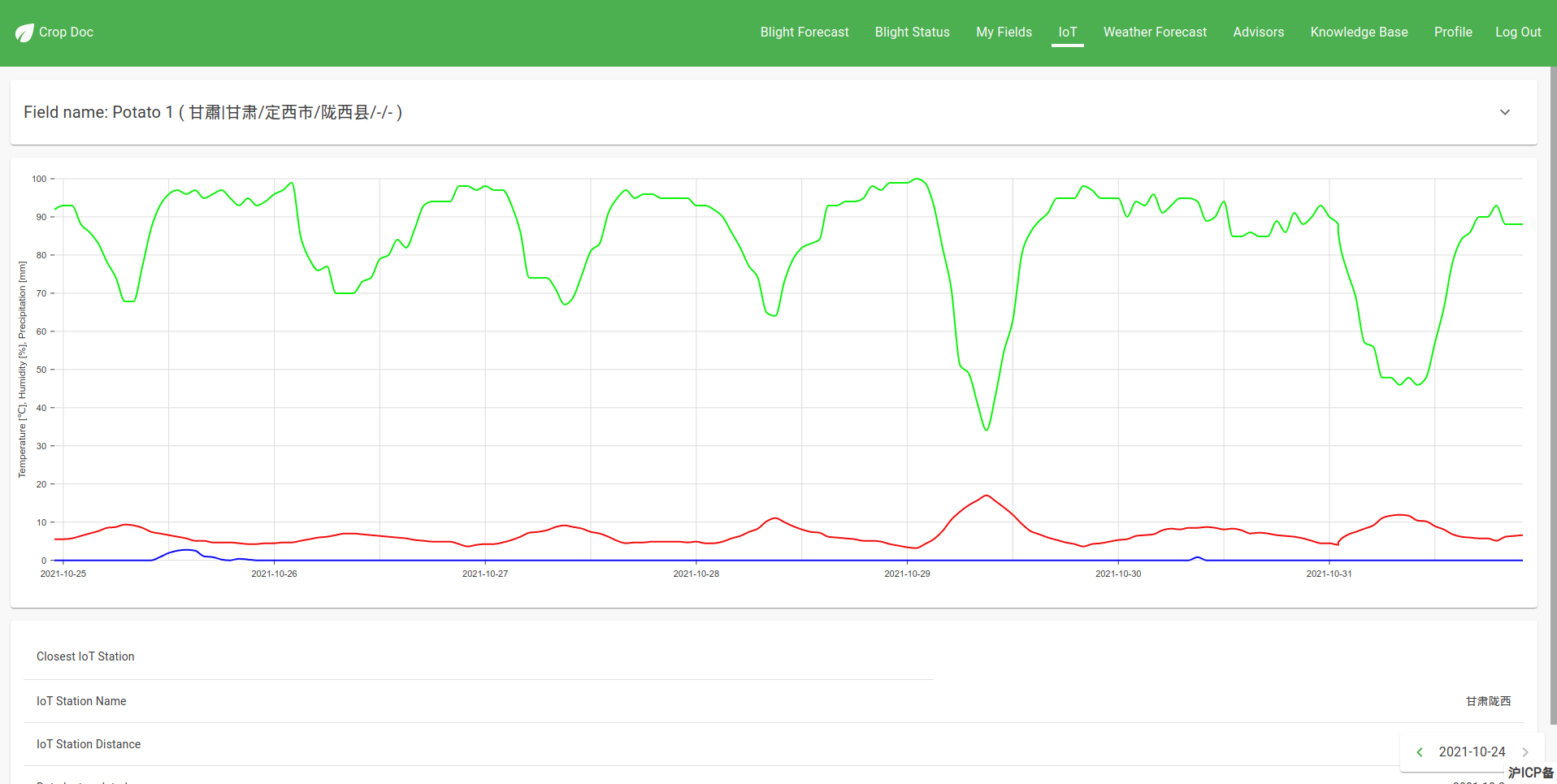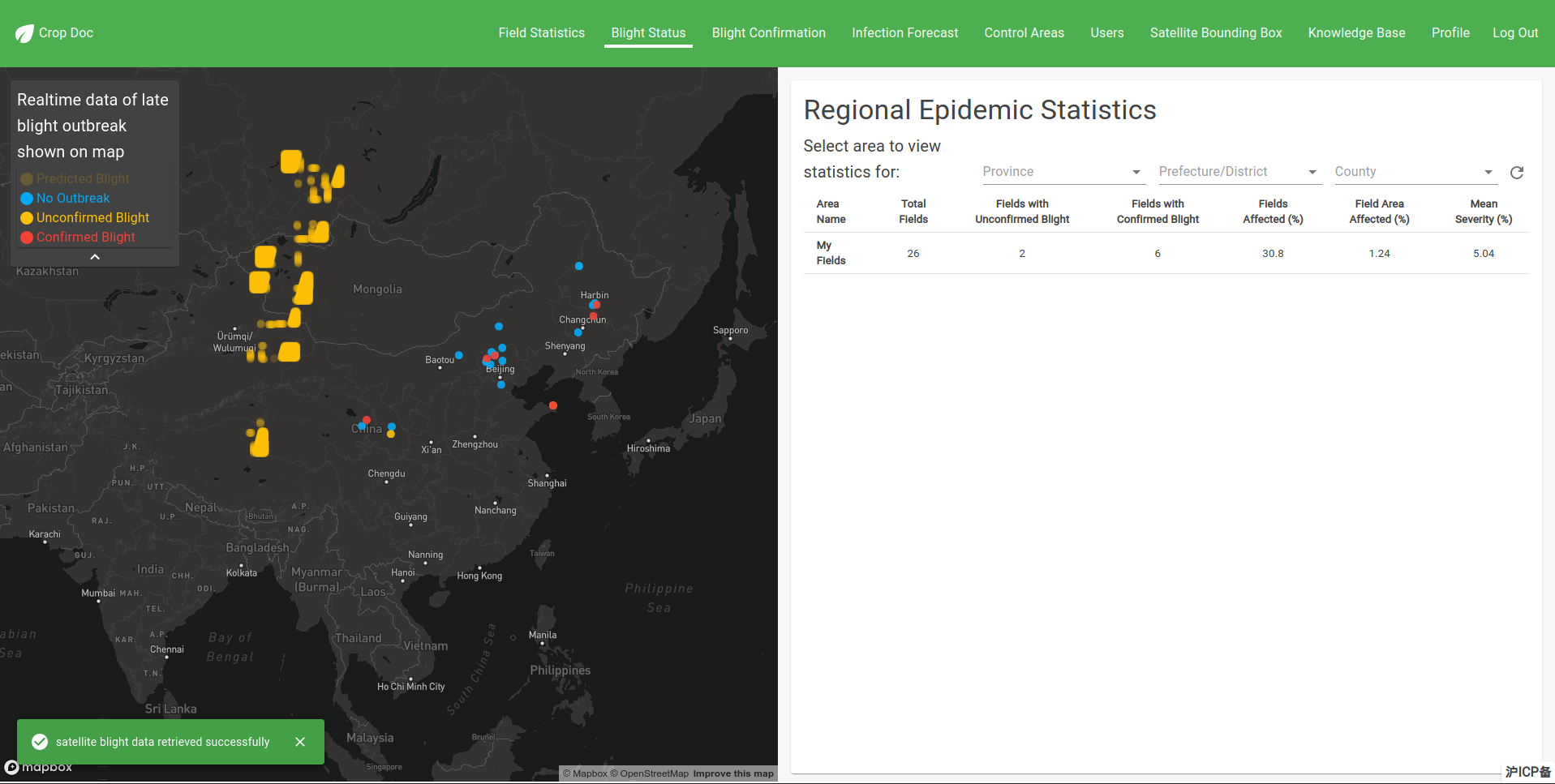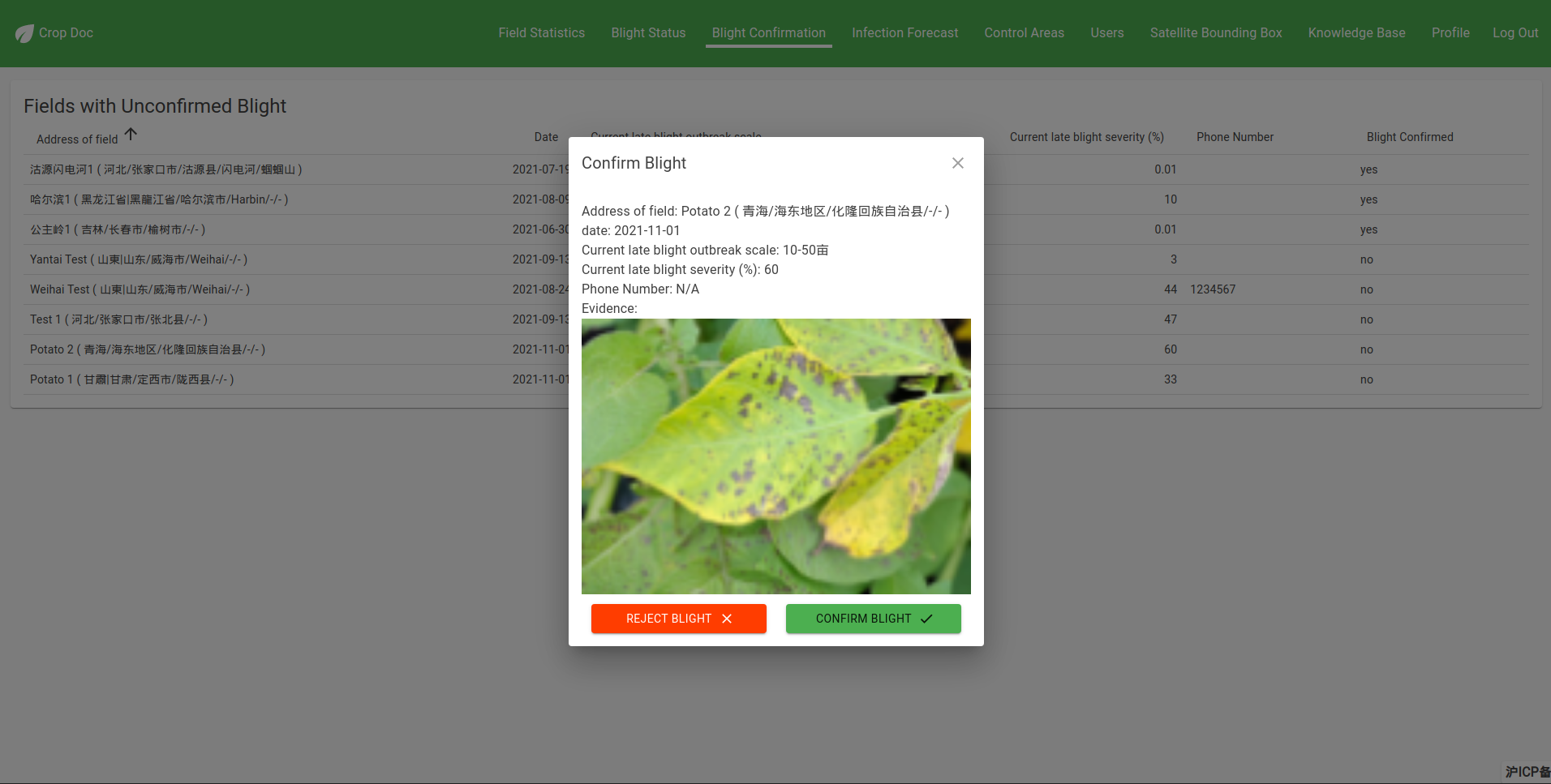Our work in AgriTech using the TDX with our partners spanning the UK and China is nearing its completion (March 2022) and we are achieving real improvements in the management of potato blight in rural China though data analysis. The working title of the project is ‘CropDoc’ and this research has been made possible by the Newton Fund bringing the best of the UK and Chinese researchers together, sharing intelligence to improve domestic food production and security. Why is this important to the future world of agriculture? CropDoc presents a field management platform that will benefit potato growers worldwide to help reduce the amount of fungicide spray needed, increase crop yields, and improve food security. And that’s not small potatoes!
Potato blight is one of the most devastating crop diseases in China. In a typical growing season, crop protection chemicals cost the global industry an estimated $10-20bn per annum. Late blight has been referred to as a ‘community disease’ because it can spread rapidly from field to field under the right weather conditions. Asexual spores travel easily on the wind when the weather is cool and moist and can rapidly infect neighbouring fields. As such, understanding the symptoms of the disease and what to do when it is detected are essential to preventing an outbreak from rapidly turning into an epidemic. The question is that if blight is a community disease, how can the community come together with the help of state-of-the-art technology to address late blight in real-time?
CropDoc exploits existing research on Potato disease identification & outbreak management in the domain of precision agriculture, agriculture digitisation & decision management support. It harnesses cutting-edge technologies (i.e. IoT, mobile devices, crowdsourced data, big data analytics and cloud computing). It provides a decision support system that generates insight from multiple data collected from remote sensing above the fields and IoT ground sensing within the fields for monitoring & prediction of disease in real-time. Farmers collaborate with the system by entering their field data along with the harvest and blight status of their crops. The system automatically links the community farm information to the state-of-the-art Potato disease identification & outbreak management algorithms. Farmers receive guidance on how to manage their crops most effectively.
The TDX Agritech project is funded under the Newton Fund – Newton UK-China agri-tech challenge 2017 and involves NquiringMinds Ltd. (NQM), Langfang Dahuaxia Shennong Information Technology Co., Ltd. (LS), StrategyAsEcology (SAE), Hebei Agricultural University (HEBAU), Manchester Metropolitan University (MMU) and the Institute of Remote Sensing and Digital Earth (RADI). The finishing post is now in sight, and the project is set to complete in March 2022. The research uses targeted real-time data to detect crop issues early and save harvests. The CropDoc project is now at the stage where we are preparing to trial it with Farmers in the South of China for their potatoes growing season.
Each partner has brought their expertise to the problem. LS provides IoT and weather sensor deployments in fields. They also manage our IT infrastructure in China and develop the mobile webview of the app. SAE -provide project management and commercial support to the CropDoc initiative. HEBAU – Develop the ChinaBlight algorithm, which allows the risk fields becoming infected with late blight to be predicted using weather information. It also makes recommendations about when Farmers should spray their crops to maximise effectiveness while minimising spray volume. MMU has developed a state-of-the-art neural network for determining if a field has late blight based on satellite images. RADI – Developed a satellite image processing system for determining soil moisture from satellite images. These soil moisture estimates feed into HEBAUs ChinaBlight model to provide an additional layer of data on which to predict areas at risk of blight. NQM, using its trusted data exchange and AI expertise, has brought it all together to deliver insight.
nquiringminds has been the data vessel pulling all the strands together. Using artificial intelligence, nquiringminds has provided the user interface for Farmers and other users to manage their Crops and see information about local weather and the outputs of the other partner’s modules. All the outputs leverage NQM’s expertise in developing data views that display complex information in an understandable way so that users can understand the risks to their Crops. NQM also develop all the backend systems for managing high volumes of data that include farm, prediction, and satellite data. NQM also provide the framework whereby state-of-the-art predictive modules from different institutions can be brought together. The TDX ( nquiringminds’ Trusted Data Exchange) provides secure data management for CropDoc, a robust API for building the user interface, as well as a distributed framework for integrating the different predictive modules and analytics through its databot architecture.
The challenges for CropDoc are in bringing many very different elements together in a single platform. The project requires IoT and weather data feeds, satellite images, and multiple state-of-the-art predictive algorithms written in different programming languages, all being fed into an application that must be translated into English and Chinese. Data management, module integration, and developing an interface for an international client base have all been challenges that we’ve overcome during this project.
Farmers are core to the CropDoc platform. In the platform, farmers can create fields and then manage what crops are in that fields, indicate what stage of growth the crops are at, and if they’ve sprayed/watered the crops or managed the crops in other ways. Farmers can also see historical and forecasted weather data. Notably, farmers can input if they’ve seen blight on the field and attach photos to the reports. Expert users of the system can confirm whether the indicated problem is potato blight. This information provided by farmers in a community is geographically linked, so if your neighbouring farmer reported blight, you would also be notified of blight nearby. The platform indicates the risk to crops and when to take preventative action to improve yield. CropDoc aims to reduce the amount of fungicide spray needed to treat fields, and by treating earlier, in a more targeted way, increase crop yields.
CropDoc proves that the TDX can be used for managing and processing satellite image data and being a hub that can bring together analytics and algorithms from very different sources cohesively and logically.
Crop protection chemicals cost the global industry an estimated $10-20bn per annum. The global precision farming market is predicted to reach $10.23bn globally by 2025, with a CAGR of 14.9% (Markets & Research, 2016). Precision farming is a critical market response to the challenge of feeding a growing global population, predicted to grow 30% from 2016 to 9.6bn by 2050. GIS mapping to help farmers operate, drones to monitor irrigation systems, and soil monitoring to detect soil properties to increase yield are some of the major applications in the agricultural digital evolution. Potato is an emerging staple for China, with significant investment & backing from the Ministry of Agriculture (MoA). Despite accounting for only 0.8% of total agricultural production in 2011, it accounted for 6.9% of the total value of crop production, second only to rice (8.2%) (CAB Reviews, May 2016). Potatoes can yield as much as $2,400 per HA in China, v $400 per HA for crops such as rice (Uni of Singapore). MoA plans to increase potato farming to 6.7m HA by 2020, up from 5.5m HA in 2016. China’s potato market is the largest in the world, four times that of the USA. Potato is planted mainly in 22 provinces, and autonomous regions. Potato late blight disease has become a major threat to potato production worldwide. In China, it causes 20~40% yield loss per annum; in severe cases, loss may reach 50%-100% (Fan, M., et al, 2012; Song & Xie, 1997). Estimated yearly economic losses due to this disease are $5bn in China (USA: $288m; UK: $65m). Based on data from US research, the economic benefit from CropDoc could be $660 per HA, or $3.6bn per annum in China. Furthermore, the estimated cost for fungicide disease detection & control is $10-20bn (4-8 sprays per growing season, given 5.5m HA planting area in 2016). More efficient fungicide use (reduction of 1 spray per growing season) would be worth a further $3bn per annum in China. There is currently no smart farming product for potato disease monitoring & surveillance in China and the UK (Patent search worldwide.espacenet.com). Market leader BlightPro (Cornell Uni) integrates some data (weather forecast, disease outbreak models) to generate insight. CropDoc will enhance the State-of-the-Art by incorporating more data types in real-time & with a new ‘–as-a-Service’ consumption model, accessible to a typical farm. CropDoc will fill a gap & add significant value to the precision farming industry for both China and UK.
CropDoc presents a field management platform that will benefit potato growers worldwide to help reduce the amount of fungicide spray needed, increase crop yields, and improve food security. The partners’ ambition is to commercialise the project, approaching government and enterprise agricultural players who manage large potato planting areas and many farmers. These large partners will benefit from the collaborative CropDoc systems as they can rapidly build the userbase and benefit from the collaborative blight reporting.
Where next for CropDoc? From a systems development perspective, the project has successfully overcome the tough data management and analytics challenges the international collaboration has presented. The project is at a readiness level where all systems are implemented. The next stage, and arguably the acid test is that it is now going to a full-scale trial with farmers in the south of China and by March 2022 we will be able to quantify by how much the research has truly impacted rural Chinese agriculture.
